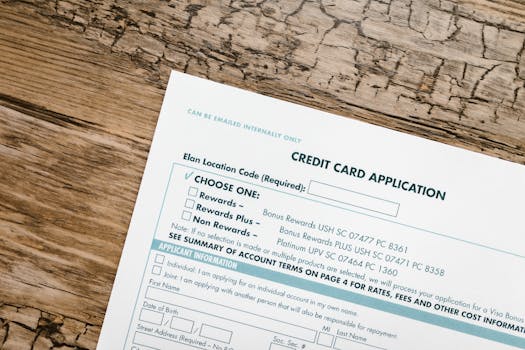Personal finance
The 50/30/20 Rule Explained: A Smarter Way to Manage Your Income
Discover the 50 30 20 rule and transform your money habits. Explore practical examples, family tips, and a simple path to clarity in your monthly finances. Start budgeting smarter today.
Advertisement
Money can slip through your fingers if you don’t have a plan. While spending feels rewarding in the moment, few people look ahead to balance today’s joys with tomorrow’s security. If you’ve ever felt your paycheck vanish before month’s end, you’re not alone — and there is an approach that can help. In comes the 50 30 20 rule, a proven strategy used by thousands to gain control and clarity around personal finances.
By organizing your income into three distinct spending categories, this rule makes budgeting less about restriction and more about purpose. It’s used by people at different income levels, whether they want to stop living paycheck to paycheck or save for major goals. Consistency is the secret ingredient, and the 50 30 20 rule gives you a repeatable structure to achieve it.
Ready to make changes that last longer than a single month? Stick around to discover why the 50 30 20 rule works, hands-on ways to try it yourself, and powerful adjustments you can use to suit your life. It’s time to step into a smarter relationship with your income.
Structuring Your Income for Stability: What the 50 30 20 Rule Breaks Down
The first thing you achieve by adopting the 50 30 20 rule is immediate clarity: you’ll know exactly where your money should go, removing much of the daily guesswork that causes stress.
With this framework, 50 percent of your take-home income covers essentials (like housing and groceries), 30 percent goes to wants, and 20 percent is steered into savings or debt paydown. Start by listing your monthly net income, then assign each part to its category.
The Essentials: Anchoring Your Core Needs in the 50% Category
Think of essentials as the sturdy foundation of a house. Without solid walls and a roof, the rest tumbles. Bills like rent, insurance, utilities, groceries, and transportation all fit here.
Let’s say you earn $4,000 after taxes monthly. You’d allocate $2,000 for these must-pay bills. Review old bank statements and highlight recurring expenses that, if missing for a month, would put your wellbeing at risk.
Always prioritize stability over luxury at this stage. “If it keeps you healthy, housed, and getting to work, it goes in essentials.” This mindset shifts fuzzy spending to firm priorities.
Wants: Identifying Enjoyable, But Optional, Expenses at 30%
The wants category gives the rule some breathing room. Here fall dinners out, streaming services, trendy coffee, and personal hobby items — they add spice to your routine without being necessary for survival.
With the 50 30 20 rule, consciously separating wants from needs prevents lifestyle inflation. Instead of confused spending, you’ll have a personalized ‘fun fund’ each month.
Look at past bank statements to catch sneaky expenses that masquerade as needs. If you say, “I deserved this treat” out loud, it’s probably a want.
| Category | Examples | Percentage | Practical Tip |
|---|---|---|---|
| Essentials | Rent, groceries, utilities, car payment | 50% | Track regular bills and confirm they’re necessary |
| Wants | Coffee shop, gym memberships, subscriptions | 30% | Add these up and cap at 30% of income |
| Savings/Debt | 401(k), emergency fund, loan payments | 20% | Automate transfers each payday |
| Irregulars | Car repairs, doctor visits, gifts | Plan extras | Create a buffer in essentials/wants each month |
| Goals | Vacation fund, down payment | Subset of savings | Split your 20% so future dreams stay on track |
Pinpointing Leaks in Daily Spending: Identifying Needs Versus Wants
You’ll start to notice more leftover cash when you draw clear boundaries between what you need and what you just enjoy. This new awareness builds smarter habits over time.
At first, separating the two sounds simple — but when you review last month’s spending, gray areas jump out. That $10 sandwich at work: was it need or want? Define your own lines with written examples.
Checklist for Sorting Each Expense Logically
Write down a week’s worth of expenses and use a yes/no checklist to tag each one. Needs keep you safe and productive. Wants elevate the experience but aren’t survival requirements.
Physical cues can help: “Would I buy this if I lost my job?” If yes, it’s a need. If you’d skip it, mark it as a want for future review.
- Assign housing, utility, and loan payments as essentials, because these bills must be paid to maintain stability and credit status closely linked to your wellbeing.
- Mark groceries as essentials, but exclude snacks and luxury foods unless they serve health or fundamental dietary needs; put those extras under wants for better awareness.
- Place clothing under essentials only for replacements or work attire, while trendy new outfits or accessories should be categorized as wants — track these for mindful shopping.
- Mark subscriptions and entertainment as wants, since they bring enjoyment but are not crucial; evaluate them each quarter to make cost-cutting choices easier when needed.
- Add transportation to essentials if it gets you to work or daily needs; luxury rideshares or car upgrades belong in wants—separate them for clarity during monthly financial reviews.
After a month, tally up your needs and wants from real statements. Use these numbers to set or adjust your future monthly 50 30 20 rule allocations more accurately.
Script for Categorizing Unusual Expenses
As irregular bills appear, say out loud: “Would delaying or eliminating this expense change my safety, housing, or income stability?” This script prompts careful reflection before you spend.
If the answer is yes, assign it to essentials, even if it’s a surprise, like medical needs. If no, move it into wants and plan accordingly without guilt.
- Schedule a monthly review of bank statements to catch shifting patterns—some wants turn into needs during life transitions, and vice versa. This keeps your 50 30 20 rule accurate.
- Review your receipts with a partner or friend who can provide outside perspective—collaborative review makes spotting biases and leaks faster, as they may notice wants you overlook.
- Treat impulse purchases as wants, not needs, unless they directly replace a crucial item, and add a one-day pause before each big “want” buy to reduce regret.
- Segregate recurring annual or quarterly expenses into a separate tracker—which you revisit each month, so big targets like insurance renewals don’t disrupt your regular rule splits.
- Create color-coded categories in budgeting apps—visual separation between needs and wants speeds up your monthly 50 30 20 rule reviews and makes rebalancing less stressful.
Finish with this actionable habit: Block a calendar reminder monthly to update your categories. This quick check prevents expensive habits from becoming invisible with time.
Example Budgets Under the 50/30/20 Rule in Action
Your take-home pay decides the real effect of the 50 30 20 rule. Here’s a quick breakdown for a $3,000 monthly net income, so you can picture the process in your own finances.
Sophie’s Scenario: “What If My Needs Exceed 50%?”
Sophie brings home $3,000 monthly after taxes, but her essentials — rent, groceries, car, insurance, minimum loan payments — total $1,800, which fits under her $1,500 ‘needs’ cap.
She makes a checklist and realizes she’s overspending on dining out and upgrading her phone. Sophie commits to cooking more meals, which gradually rebalances her split after two months.
The key instruction: When “needs” exceed your 50% limit, adjust ‘wants’ first, then find new ways to renegotiate bills or income. Track actual changes in a spreadsheet for ongoing improvement.
Marcus’s Adjustment: Saving on a Fluctuating Income
Marcus is a gig worker; some months, his income barely covers essentials. He uses the percentages, not fixed dollars, recalculating each month and automating 20% savings on weeks with more gigs.
This routine builds resilience for his lean months, as the 50 30 20 rule tightens when money is low but never halts his financial progress completely.
Marcus’s script: “Did my income change this month? What’s 50, 30, or 20 percent of it this round?” He follows the math and accepts that category limits flex as life shifts.
Adapting the Rule for Family or Partner Budgets
Balancing finances as a household adds complexity. The 50 30 20 rule works best when everyone’s on board and each person’s priorities are discussed openly in a nonjudgmental way.
Weekly Reviews for Shared Budget Success
Schedule a weekly ‘money talk’—even just 15 minutes—to align each partner’s expectations and flag stressors early. Review spending against last week’s plan and use color-coded sheets for needs, wants, and savings.
Body language cues: Open posture and attentive listening signal safety when discussing tricky expenses. Celebrate reaching a savings goal together with a shared fun activity from the ‘wants’ bucket.
The actionable step: End each session by agreeing on one adjustment for the coming week, so you both feel heard and empowered by the process, not overwhelmed by tracking.
Adapting for Growing Families and Kids
Family needs shift — diapers and daycare replace happy hour and gym classes. Parents can include older kids by handing them a “mini 50 30 20 rule” for allowances.
Discuss major expenses openly and explain which ones get special treatment (like school trips or family healthcare). The goal: everyone learns the basics and why separating expenses matters for future choices.
Direction for families: If a big new cost pops up, like braces, adjust the budget using this rule and decide what to shift or postpone in wants. Post visible reminders on the fridge for teamwork.
Rebalancing When Life Throws a Curveball
Job changes, relocations, or unexpected health issues demand flexibility. The 50 30 20 rule keeps budgets steady but allows for real-life adjustments when after-tax income or required spending shifts.
Mini-Step Process for Budget Surprises
1. Write down the new monthly net income immediately after any financial event. 2. Recalculate your 50, 30, and 20 percent targets by multiplying your income by those percentages.
3. List “non-negotiable” expenses for essentials on one side, and “pause-able” wants on another. 4. Temporarily shrink wants if essentials rise or income drops, and revisit category splits after the dust settles.
This keeps your foundations sturdy, even if the top floors sway in a storm. Mark your calendar to review progress every two weeks after big events until you feel stable again.
If Debt Payments Balloon Unexpectedly
Sometimes, debt minimums suddenly eat up most of your 20 percent. Instead of sacrificing savings forever, renegotiate or refinance loans where possible and look hard at “wants” that could pause until you regain balance.
A direct script for creditors: “Is there a hardship program available to lower my minimum for the next six months?” This approach prioritizes essentials and gets savings back on track faster.
Keep a copy of this debt rule posted inside your budget app: “Debt is part of the 20 percent, but never all of it. Always fight for some monthly savings, however small.”
Building Lasting Habits: Automate, Track, and Celebrate Your Progress
Automation is a vital ally to anyone using the 50 30 20 rule. Set up recurring bank transfers the day you get paid for savings and debt repayments first, so you aren’t tempted to spend extra.
Checking your budget weekly, even briefly, is like gym reps for financial discipline. Each small improvement multiplies. When your savings or debt payoff grows by even $10 a month, celebrate with a low-cost want.
The Mini-Reward System for Motivation
A reward doesn’t need to be expensive — try a nice solo walk, your favorite movie, or a homemade treat. The important thing is acknowledging progress so you’re motivated to repeat positive behaviors.
If you miss a goal, skip the guilt and rerun your spreadsheet for next month. Use changes as lessons, not failures, which refines your instincts with every cycle of the 50 30 20 rule.
When sharing milestones with friends, you cement the habits in your identity. Say, “I stuck to my 50 30 20 split three months straight!” and log the result for next month’s plan.
Spotting Sneaky Habits that Threaten the Rule
Habit trackers and notes in budgeting apps make leaks visible. For example, download your app summary at the end of every month and highlight recurring wants you keep forgetting about, like game downloads or autopay donations.
Address those habits one at a time so you don’t overwhelm yourself. If you consistently bust your 30 percent for wants, try a challenge: “No new wants for one week.” Replace the gap with a free activity like a library visit.
Over time, your muscle memory for spending will improve — making every round of budgeting with the 50 30 20 rule a little easier and more natural to stick with for good.
Applying the 50/30/20 Rule to Any Life Stage
Whether you’re just starting out, switching careers, or planning retirement, the 50 30 20 rule fits all life stages by adjusting to current income and priorities. It offers flexibility without losing structure.
As you earn more or less, tweak the dollar amounts while sticking to the percentages. This lets your savings and spending goals grow along with you, maintaining harmony through life’s transitions.
For Young Adults and College Students
Young adults juggling rent, tuition, and first jobs can use the 50 30 20 rule to make sure debt repayment and savings aren’t skipped. Prioritize stable housing and bare expenses first, capping wants for guilt-free treats.
Create a weekly check-in appointment to review allowances or side hustle income. Even in tight years, transferring $10 monthly into savings builds crucial habits for the future.
Whenever you get a pay bump or new grant, immediately recalculate splits and automate increased transfers into the 20 percent savings/debt bucket. This locks in progress before lifestyle creep can set in.
For Retirees or Empty Nesters
Those past their major earning years adjust the rule for steady, predictable income streams like social security or pensions, prioritizing medical essentials and travel as core needs change.
Regularly decrease wants if expenses ramp up, using the 30 percent category as a flexible lever. Split the 20 percent into healthcare savings and fun projects for personal growth without anxiety.
Set quarterly reminders to revisit the total budget and compare actuals against planned splits. This keeps retirement spending intentional and enables a comfortable, long-term sense of security with the 50 30 20 rule.
Your Path Forward: Making the 50 30 20 Rule Work for You
The 50 30 20 rule streamlines monthly finances, delivers peace of mind, and frees you to enjoy life’s wants without guilt or confusion. By setting fixed boundaries, the guesswork is out — and stability is finally in reach.
This isn’t just a one-time fix, but a lifelong practice. As you move through career shifts, family growth, or new goals, adjust the percentages but keep the habit. The rhythm of the rule provides confidence no matter what arrives.
Try this: Start with a single income and expense log today. Plug in your own numbers and categories as described here. You’re not chasing perfection; you’re building consistency with every repeat of the 50 30 20 rule.





